| Class: | angiosperms |
| Order: | Caryophyllales |
| Family: | Tamaricaceae |
| Genus: | Myricaria |
| Scientific name: | Myricaria bracteata Royle |
| Name acc. to: | Gubanov 1996 |
| Herbar: | list records  |
| Synonym: | M. alopecuroides Schrenk (acc. to Grubov 1982) |
| Description: | Shrubs up to 2 m tall, with brownish grey bark on old shoots. Leaves linear, small 1-6 x 0.5-1 mm. Flowers in dense racemes, 5-20 cm long. Petals without appendages; 10 stamens, filaments connate in a tube. Seeds oblong, 0.5-1 mm long with long awn, covered with up to 4 mm long hairs in upper half. |
| Comments: | Small leaved species with dense long racemes.
See also: http://www.manfred-vesper.de/datei.php?did=229 |
| Link to Flora of China: | http://www.efloras.org/browse.aspx?flora_id=2&name_str=Myricaria+bracteata |
| open map in a new window | 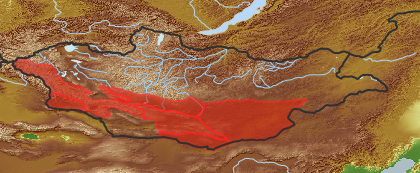 |
| Habitat: | Sayr slopes, canyons, waterside pebbles (Grubov 2001). |
| Habit (i)general appearance of a plant | |
| Growth form: (i)Herb, shrub, tree or climber. | shrub, subshrub or semishrub (i)Shrub, multi-stemmed, mostly (0.2) 0.5 - 5 m high, shoots woody up to the tip
example: Caragana leucophloea   inherited by family Tamaricaceae: shrub, subshrub or semishrub inherited by family Tamaricaceae: shrub, subshrub or semishrub
|
| Parasite status: (i)Is the plant a half- or full parasite? | no parasite/saprophyte (i)Plant fully autonomous, leaves with chlorophyll
example: Most plants, Ranunculus  inherited by family Tamaricaceae: no parasite/saprophyte inherited by family Tamaricaceae: no parasite/saprophyte
|
| Water or terrestrial plant: (i)Where do the plants grow? | terrestrial (i)Plant grows on dry land
example: Orostachys spinosa  inherited by family Tamaricaceae: terrestrial inherited by family Tamaricaceae: terrestrial
|
| Leaf (i)expanded, usually photosynthetic organ of a plant (including phylloclades) | |
| Leaf development: (i)Structure and development of leaves. | with green leaves (i)Plant with green leaves  inherited by family Tamaricaceae: with green leaves inherited by family Tamaricaceae: with green leaves
needles or scales (i)Leaves short, broad more or less adjacent to axis (scales)) or acicular (needles)
example: Pinus (needles), Cupressus, Ephedra (scales)   inherited by family Tamaricaceae: needles or scales inherited by family Tamaricaceae: needles or scales
|
| Leaf arrangement: (i)Arrangement of leaves at the stem. | alternate (i)One leaf per node; distiche: arranged in two vertical rows, equitant
example: Phragmites    inherited by family Tamaricaceae: alternate inherited by family Tamaricaceae: alternate
|
| Simple or divided leaves: (i)Are the leaves simple or completely divided in several parts? Blade of the leaf entire or (more or less) deeply dissected. Attention: There are various appearances of the leaf margin (from entire to toothed and lobed). Here, we ignore this and ask only for dissections that separate the leaf for more than one third of its length or width, whatever is smaller. Sometimes, it is difficult to tell apart compound leaves from a shoot system with simple leaves: look for stipulae and/or axillary buds at the ground of the leaves: if only some possess these structures, the others are most likely leaflets of a compound leaf. | simple (i)Non-divided leaf, but margin may be incised nearly to the ground   inherited by family Tamaricaceae: simple inherited by family Tamaricaceae: simple
|
| Length of leaves: (i)How long is the leaf, be carefull in compound leaves, measure the complete leaf. | from 6 mm to 10 mm  inherited by family Tamaricaceae: inherited by family Tamaricaceae:
|
| Stipule: (i)Leaflets at the base of the petiole, these are smaller and of different shape. | none (i)Without stipules
example: Euphorbia, Ericaceae s.l.  inherited by family Tamaricaceae: none inherited by family Tamaricaceae: none
|
| Leaf veination: (i)Arrangement of the main veins of a leaf. | pinnate (i)One main vein, several side veins, sometimes inconspicuous
example: Cicerbita     inherited by family Tamaricaceae: pinnate inherited by family Tamaricaceae: pinnate
|
| Flower (i)reproductive portion of the plant, consisting of sepals, petals, stamens, and pistils | |
| Flower appearance and pollination: (i)General appearance of the flower. | attractive, animal-pollinated (i)attractive and coloured flowers, mostly large, attracting surely animals
example: Trollius, Rosa, Chamaerhodos  inherited by family Tamaricaceae: attractive, animal-pollinated inherited by family Tamaricaceae: attractive, animal-pollinated
|
| Flower colour: (i)Attention: assess colour of the most colourful parts of the flower, but not of the stamens; be aware of single plants with a mutation (mostly white) on flower colour. | white (i)Most plants of the population white
example: Pleurospermum, Maianthemum  inherited by family Tamaricaceae: white inherited by family Tamaricaceae: white
pink (i)Between red and white
example: Centaurium  inherited by family Tamaricaceae: pink inherited by family Tamaricaceae: pink
|
| Perianth arrangement: (i)Attention: in some plants, flowers may be dimorphic in different ways (dioecious or gynodioecious). If flowers vary, record the characters of the most showy flowers. | double, different (i)Two types of perianth leaves, differently coloured (sepals: outer periant leaves, usually greenish, and petals: inner perianth leaves, usually coloured)
example: Parnassia    inherited by family Tamaricaceae: double, different inherited by family Tamaricaceae: double, different
|
| Diameter of flower: (i)Diameter of flower or flower head. | from 5 mm to 10 mm (i)
example: Stellaria  inherited by family Tamaricaceae: inherited by family Tamaricaceae:
from 10 mm to 20 mm (i)
example: Potentilla  inherited by family Tamaricaceae: inherited by family Tamaricaceae:
|
| Flower symmetry: (i)Symmetry of the perianth leaves. Attention: to assess this character, look on sepals, petals and stamens, but neglect carpels and ovary. | radiary, regular (actinomorphic) (i)More than two axis of symmetry
example: Saxifraga: 5; Iris: 3   inherited by family Tamaricaceae: radiary, regular (actinomorphic) inherited by family Tamaricaceae: radiary, regular (actinomorphic)
|
| Flower form: (i)common forms of flowers ? Veronica | simple (flat) - Do not confuse with inflorescences as in some Asteraceae (i)Petals spread out, flower appearing flat
example: Mollugo, Trientalis, Pulsatilla, Saxifraga   inherited by family Tamaricaceae: simple (flat) - Do not confuse with inflorescences as in some Asteraceae inherited by family Tamaricaceae: simple (flat) - Do not confuse with inflorescences as in some Asteraceae
|
| Sepal number: (i)Number of sepal leaves (outer perianth leaves, calyx leaves, mostly greenish). Attention, this character applies only for flowers separated in sepals and petals, thus excluding most monocots. Be aware of the bracts (involucral leaves) of Asteraceae flowerheads, do not qualify these as sepals! Be also aware in Rosaceae is often an epicalyx developed, in this case count all parts. | 4 (i)
example: Sinapis  inherited by family Tamaricaceae: 4 inherited by family Tamaricaceae: 4
5 (i)
example: Polemonium  inherited by family Tamaricaceae: 5 inherited by family Tamaricaceae: 5
|
| Sepal fusion: (i)To which degree are the sepal leaves connected? Attention, this character applies only for flowers separated in sepals and petals, thus excluding most monocots. Be aware of the bracts (involucral leaves) of Asteraceae flowerheads, do not qualify these as sepals! | free (i)All leaves separate from each other
example: Geranium  inherited by family Tamaricaceae: free inherited by family Tamaricaceae: free
|
| Petal / Tepal number: (i)Number of petal leaves (inner perianth leaves, usually coloured). | 4 (i)
example: Galium  inherited by family Tamaricaceae: 4 inherited by family Tamaricaceae: 4
5 (i)
example: Potentilla  inherited by family Tamaricaceae: 5 inherited by family Tamaricaceae: 5
|
| Petal / Tepal fusion: (i)To which degree are the petal leaves connected? Petals sympetalous. | free (i)all petal leaves separate from each other
example: Anthriscus  inherited by family Tamaricaceae: free inherited by family Tamaricaceae: free
|
| Spur: (i)A hollow, slender, sac-like appendage of the perianth leaves, storing nectar. | no spur (i)Flower without appendage
example: Peganum  inherited by family Tamaricaceae: no spur inherited by family Tamaricaceae: no spur
|
| Fruit (i)the seed bearing organ, with or without adnate parts; a ripened ovary and any other structures which are attached and ripen with it. Aggregate fruits are handled like simple fruits for determination. | |
| Consistency: (i)Fleshy fruits or dry fruits, see dispersal adaptations for further classification. | dry (i)With a dry outer shell, no fleshy parts, but seed (embryo) could be edible  inherited by family Tamaricaceae: dry inherited by family Tamaricaceae: dry
|
| Type of fruit: (i)Common fruit types (including pseudocarp). | Solitary fruits (i)     inherited by family Tamaricaceae: Solitary fruits inherited by family Tamaricaceae: Solitary fruits
capsule (i)Dry dehiscent fruit, releasing seeds by slits or holes.
example: Poppy, most Caryophyllaceae, Cerastium, a lot of Scrophulariaceae, Iris (oppened capsule looks like Delphinium), Zygophyllum - it is a very common fruit type     inherited by family Tamaricaceae: capsule inherited by family Tamaricaceae: capsule
Dehiscent fruits (i)Fruits open along a longitudinale line (except silicula)  inherited by family Tamaricaceae: Dehiscent fruits inherited by family Tamaricaceae: Dehiscent fruits
|
| Opening of fruit: (i)Mode of dehiscence at maturity to release seeds. | opening along dehiscent line (i)Opening along a preformed line
example: Vicia, Lathyrus: pods  inherited by family Tamaricaceae: opening along dehiscent line inherited by family Tamaricaceae: opening along dehiscent line
opening with valves (i)Capsules, siliqua, pods or follicles; opening with two or more dehiscent lines and split off outer parts as valves
example: Alyssum, Arabis: siliqua, Epilobium: four-valved capsule, Arenaria: capsule with three valves.     inherited by family Tamaricaceae: opening with valves inherited by family Tamaricaceae: opening with valves
opening / dehiscent (i)Dry? Fruits opening with different types  inherited by family Tamaricaceae: opening / dehiscent inherited by family Tamaricaceae: opening / dehiscent
|
| Root / shoot below ground (i)plant part below ground (in most cases), including below ground shoots, without leaves | |
| Root type: (i)Organisation of the roots. | allorhizous (i)Plant with a conspicuous tap root, one larger tap root with side roots
example: Dicotyledonae  inherited by order Caryophyllales: allorhizous inherited by order Caryophyllales: allorhizous
|
| Distribution (i)region where the plant is likely to be found | |
| Distribution (Veg. Zones): (i)acc. to Grubov 1952 | Mongolian Altai (i)In distribution data often named as '7' 
Valley of Lakes (i)In distribution data often named as '11' 
East Gobi (i)In distribution data often named as '12' 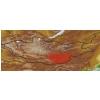
Gobi-Altai (i)In distribution data often named as '13' 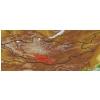
Dzungarian Gobi (i)In distribution data often named as '14' 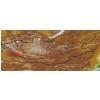
Alashan Gobi (i)In distribution data often named as '16' 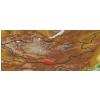
acc. to: Gubanov 1996 |